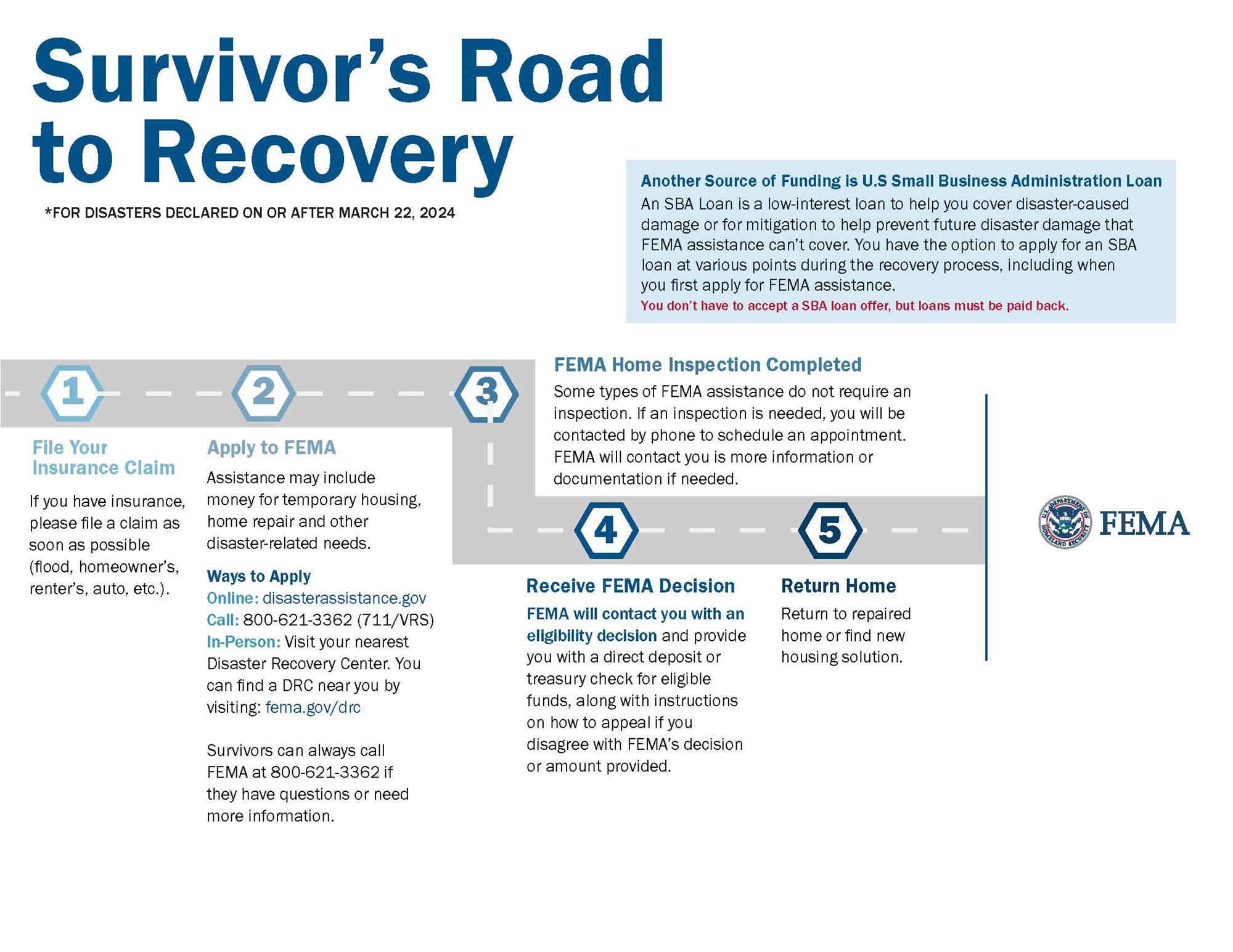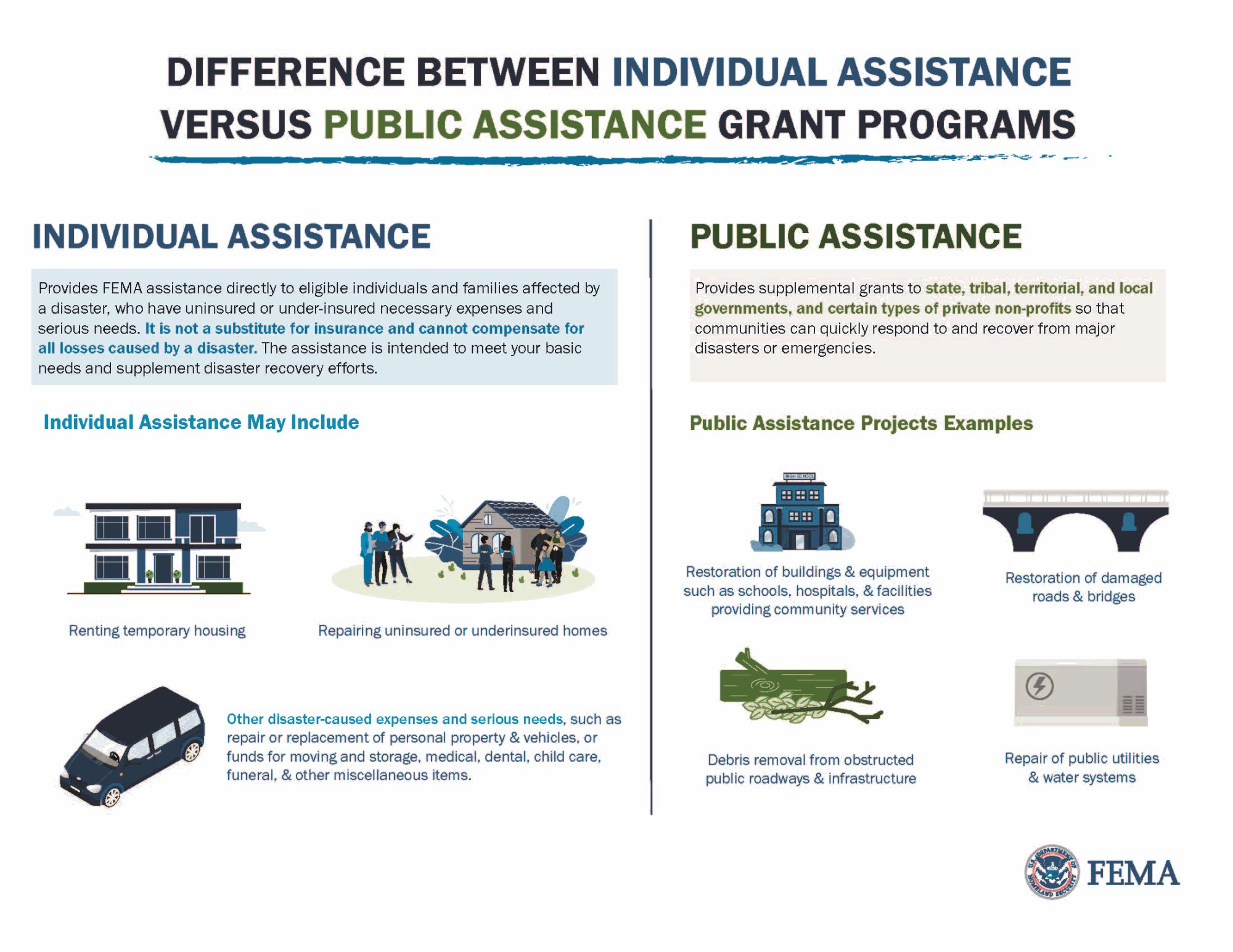Hurricane Helene has had a devastating effect on the southeastern part of the country, and many are dealing with property damage, the loss of power, water, cell coverage, and more. We understand many impacted individuals and businesses have likely never experienced this level of devastation by a natural disaster and are unsure of how to proceed and recover. We wanted to reach out and provide some helpful insights during this challenging time.
Some of the initial assessments you may be conducting relate to workplace safety, employee concerns, supporting relief workers and first responders, and considering what financial assistance may be needed. When a disaster hits, immediate assistance can arrive through various federal funding agencies.
One of the places to start for information is the Federal Emergency Management Agency (FEMA) website. FEMA has a dedicated page for Hurricane Helene resources and guidance. This page also includes links to local resources for each state included in the disaster area. For example, this link will take you to the Helene disaster page specifically for North Carolina. From here, you can select the links to start the application process for individual and public assistance. Additional FEMA fact sheets are included below, and here is a link to the FEMA Quick Reference Guide.
If you are considering a submission for FEMA Public Assistance projects, these are some key questions to keep in mind:
- Have you thought about guidance on what assistance is available to your entity and where to go for assistance?
- Do you have compliant practices surrounding procurement and vendor management during a disaster?
- Have you reviewed your insurance coverage in light of FEMA protocols?
- Do you have the bandwidth to address the filing requirements for Public Assistance within the restricted time frame?
- Is your current staff able to track and categorize projects and expenditures including management costs?
- Do you understand FEMA’s reporting and how to respond to Requests for Information, appeals, or arbitration?
We are here for you. Our team is experienced with coordinating between relevant agencies and your community. We can assist in your recovery efforts through the FEMA Public Assistance Program, FEMA BRIC Program, HUD’s Community Development Block Grant – Disaster Recovery Program, and other disaster-related grant programs. Our goal is to assist you in successfully navigating federal funding opportunities.
Our Grants Management Services team has an extensive history of assisting public sector and other industry clients with recovery efforts. These efforts include Hurricanes Katrina, Sandy, Lee, Irene, Florence, Matthew, Maria, as well as catastrophic floods and the COVID-19 pandemic.
If your organization has been impacted and would like more information, please contact a Forvis Mazars advisor today.
Appendix 1: Survivor’s Road to Recovery
 Source: FEMA.gov
Source: FEMA.gov
- Survivor's Road to Recovery
- *For disasters declared on or after March 22, 2024
- Another Source of Funding is U.S. Small Business Administration Loan
- An SBA Loan is a low-interest loan to help you cover disaster-caused damage or for mitigation to help prevent future disaster damage that FEMA assistance can't cover. You have the option to apply for an SBA loan at various points during the recovery process, including when you first apply for FEMA assistance.
- You don't have to accept a SBA loan offer, but loans must be paid back.
- 1: File Your Insurance Claim
- If you have insurance, please file a claim as soon as possible (flood, homeowner's, renter's, auto, etc.).
- 2: Apply to FEMA
- Assistance may include money for temporary housing, home repair and other disaster-related needs.
- Ways to Apply
- Online: disasterassistance.gov
- Call: 800-621-3362 (711/VRS)
- In-Person: Visit your nearest Disaster Recovery Center. You can find a DRC near you by visiting: fema.gov/drc
- Survivors can always call FEMA at 800-621-3362 if they have questions or need more information
- 3: FEMA Home Inspection Completed
- Some types of FEMA assistance do not require an inspection. If an inspection is needed, you will be contacted by phone to schedule an appointment. FEMA will contact you if more information or documentation is needed.
- 4: Receive FEMA Decision
- FEMA will contact you with an eligibility decision and provide you with a direct deposit or treasury check for eligible funds, along with instructions on how to appeal if you disagree with FEMA's decision or amount provided.
- 5: Return Home
- Return to repaired home or find new housing solution.
Appendix 2: Individual Assistance Versus Public Assistance Grant Programs
 Source: FEMA.gov
Source: FEMA.gov
- Difference Between Individual Assistance Versus Public Assistance Grant Programs
- Individual Assistance
- Provides FEMA assistance directly to eligible individuals and families affected by a disaster, who have uninsured or under-insured necessary expenses and serious needs. It is not a substitute for insurance and cannot compensate for all losses caused by a disaster. The assistance is intended to meet your basic needs and supplement disaster recovery efforts.
- Individual Assistance May Include:
- Renting temporary housing
- Repairing uninsured or underinsured homes
- Other disaster-caused expenses and serious needs, such as repair or replacement of personal property & vehicles, or funds for moving and storage, medical, dental, child care, funeral, & other miscellaneous items.
- Public Assistance
- Provides supplemental grants to state, tribal, territorial, and local governments, and certain types of private non-profits so that communities can quickly respond to an recover from major disasters or emergencies.
- Public Assistance Projects Examples:
- Restoration of buildings & equipment such as schools, hospitals, & facilities providing community services
- Restoration of damaged roads & bridges
- Debris removal from obstructed public roadways & infrastructure
- Repair of public utilities & water systems
- Individual Assistance
